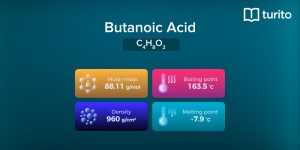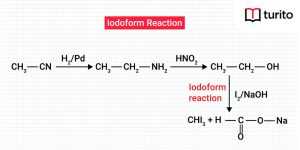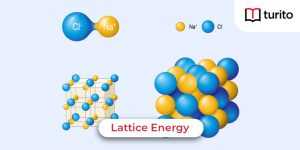Calcium Oxide
Have you asked yourself a question while studying fundamentals of chemistry what is the CaO compound name? Since ancient times, calcium oxide has been employed as a chemical product because of its colorless and odorless qualities. CaO is the Calcium oxide formula. It is an inorganic, amorphous compound in the form of crystals or granules in the solid phase. Quick lime, caustic lime, or scorched lime are further names for calcium oxide. Calcium oxide is either white or silvery in color when it is purified. In contrast, it is yellow or reddish when contaminants like ferrous, magnesia, silicate, or alumina are present.
The following article explains what calcium oxide is, its properties and its uses in various industries, including mining, light, petroleum, chemical, and construction, among others.
What is CaO?
CaO chemical name is calcium oxide. There are other names too, such as:
- Quicklime
- Burned lime
- Baked lime
Calcium oxide formula: All of the above-mentioned names have the same formula CaO. Calcium oxide, often known as oxocalcium, is the chemical name for CaO. CaO’s chemical name and compound name are the same. Because of its structural and molecular characteristics, it is a clear alkali and amorphous chemical substance frequently utilized in factories and medical firms.
Calcium oxide, often known as quicklime, is used to make various construction materials, including cement. Calcium oxide was labelled the earliest chemical utilized by humans since it is an ionic material that people have used since the Middle Ages.
CaO Chemistry
Calcium oxide’s chemistry: Calcium oxide has one cation and one anion. The calcium cation with a valency of +2 and the oxygen anion with a valency of -2 make up the molecules of calcium oxide. The bonds between the calcium and oxygen molecules are ionic. Below is a diagram depicting CaO chemistry.
Preparation of Calcium Oxide
- Materials containing calcium carbonates (CaCO3), such as seashells and marble, can thermally decompose to form calcium oxide in a hot oven.
- Quicklime is made by a procedure known as calcination. The chemicals in this method are chemically decomposed at elevated heat while maintaining a temperature below the melting point.
- The average heat for calcining calcium carbonate is between 1070-1270 °C. The typical setting for these reactions is a rotating furnace; the end products and outcomes are carbon dioxide and burnt lime. Using Le-Chatelier’s principle, the generated carbon dioxide is immediately eliminated, allowing the reaction to proceed until the process has been completed.
CaCO3 → CaO + CO2
- A process like this releases heat and is reversible while moving forward.
Formula for Limewater
Calcium hydroxide, sometimes known as lime water, has the chemical formula Ca(OH)2. Using the following process, calcium hydroxide, or Ca(OH)2, is created when water is added to lime.
CaO + H2O → Ca (OH)2
It is a highly exothermic process that results in the creation of vapor puffs.
What distinguishes lime water from quicklime?
The compound name for lime or quicklime is Calcium oxide, while the formula for calcium oxide is CaO. On the other hand, the compound name for lime water is calcium hydroxide, and its chemical formula is Ca (OH)2.
Physical Characteristics of Calcium Oxide
- It is an odorless, white, irregular substance with no clearly defined structure.
- CaO has a molar mass of 56.077 g mol-1.
- Since calcium oxide is ionic, it can dissolve in glycerin and water.
- Calcium oxide has a high boiling point of 2850 °C.
- The calcium oxide has a 2613 °C melting temperature.
- It is used to create light because it is a hard substance, which means it has a high melting temperature and does not disintegrate when heated. It is a strong substance that can tolerate extreme temperatures.
- 40 kJ mol-1 is the typical molar entropy associated with calcium oxide.
- When heated above 2643 K, this chemical produces an intense brightness.
Chemical Properties of Calcium Oxide
- When exposed to the environment, it absorbs humidity and produces calcium hydroxide, often known as quicklime. The slaking of lime is the term for this procedure.
- Calcium carbonate is created if calcium oxide accepts CO2 and is exposed to the environment.
- Due to its basic nature, it reacts with several acidic compounds at extreme heat to produce the corresponding salts.
- It produces calcium sulfate when it interacts with sulfuric acid. The interaction is an acid-base one.
Uses of Calcium Oxide
Calcium oxide has many major uses in our everyday lives, some of which are mentioned and discussed below.
Light
It emits a bright light when burning CaO at temperatures of 2,400 degrees Celsius or 4,350 degrees Fahrenheit. Until electric lighting was developed, theater shows frequently used artificial light known as the limelight.
Cement
Calcium oxide is the major component used in cement production. It is a widely accessible and affordable alkali. Before use, over half of the world’s quicklime output is converted to calcium hydroxide. Drinking water is purified using quicklime.
Petroleum industry
Quicklime is utilized in refining petroleum to nullify the associated sulfur pollutants to decrease pollution levels. Quicklime is also employed to prevent corrosion and prolong the lifespan of pollution-control systems.
Paper
Calcium oxide is used in the chemical process to convert wood into wood pulp. This process generates sodium hydroxide from sodium carbonate. Lime is employed as an adhesive in dye degradation, a filter conditioner, and a neutralizing ingredient in disposing of industrial effluents from paper mills. The collection of useful waste products from kraft mills also uses CaO.
Plaster
Individuals in the Neolithic era employed cement made of limestone for floors and different purposes, as per historical data. Until the late nineteenth century, the limestone floor was used in some capacity.
Production chemicals or Electricity
A procedure termed flue-gas desulfurization is used to remove sulfur dioxide off vent condensates.
Mining
When quicklime’s combustion properties are utilized, rock can be fractured. The chemical name of quicklime is calcium oxide. As is customary, a shot hole is bored into the rock. Quicklime’s enclosed capsule is then inserted into the shot hole and pressed down. When combined with the increased quantity of the leftover hydrated material, the vapor released after a certain quantity of water is fed into the capsule can fracture the rock. It won’t happen if the rock is especially tough.
Burial of Dead Bodies
It was formerly thought that quicklime might hasten the decaying of bodies. On the contrary, the addition of quicklime can encourage preservation. People may believe that quicklime may remove the stink of decaying, leading to this incorrect conclusion.
Creating Heat Energy
The following equation is employed by raw lime to create heat energy by generating calcium hydroxide and hydrate.
CaO (s) + H2O (l) = Ca (OH)2 (aq) (ΔHr = -63.7 kJ / mol CaO)
For example, this method may be applied to provide a suitable mobile heat source for quickly heating meals.
Other Important Uses of Calcium Oxide
- It is employed in the production of plaster.
- It is utilized in the production of synthetic dyes.
- Calcium oxide is applied in the refining of sugar.
- The majority of its applications are medical, as well as the creation of synthetic insecticides.
- It is employed in industry to produce building resources like metal and paper.
- It is frequently used in labs for chemical reactions that dehydrate and precipitate compounds.
- Since the buildup of silt and limestone in the subsurface reveals the outcome of their translocation through history, it is utilized to estimate the dates of different sedimentary deposits.
Conclusion
In CaO, calcium and oxygen combine chemically to generate calcium oxide, a compound with a wealth of unique traits that allow it to carry out a variety of jobs. Both quicklime and burned lime are other names for it. Among the most common goods in daily life is calcium oxide, which improves everyone’s prospects of relaxation, convenience, and safety.
Recent times have witnessed significant growth in its accessibility and production, and these trends are expected to continue as long as it is used consistently to get the greatest results.
Frequently Asked Questions
1. What is lime water, exactly? Can you drink it?
Calcium oxide or oxocalcium are the chemical and compound names for CaO. Calcium oxide combines with water to create a calcium hydroxide solution, which is then used to make limewater. It is indeed edible. It helps to avoid indigestion, stomach troubles, and other problems by simulating the action of gastric acid. (Hydrochloric acid).
2. Does calcium oxide dissolve in water?
Yes, it dissolves in water and rapidly absorbs atmospheric moisture. Additionally, it can take in atmospheric carbon dioxide and convert it into calcium carbonate.
3. What is calcium oxide’s health risk?
- Inhaling quicklime or its contact with moist eyes can both result in severe discomfort.
- Inhalation might cause various side effects, such as asthma, cough, or laboured breathing.
- Additionally, overeating can result in sickness, burns, a perforated nasal septum, and purging.
- Quicklime reacting with water can produce heat intense enough to ignite flammable substances.

Relevant Articles
Butanoic Acid – Structure, Properties, Uses
Butanoic Acid The carboxylic acid, butanoic acid, has the structural …
Butanoic Acid – Structure, Properties, Uses Read More »
Read More >>What is Iodoform? Characteristics and Uses
Iodoform The formula for Iodoform is CHI3. It is biotic …
What is Iodoform? Characteristics and Uses Read More »
Read More >>Lattice Energy – Explanation, Factors & Formulas
Lattice Energy Lattice energy evaluates the intensity of the ionic …
Lattice Energy – Explanation, Factors & Formulas Read More »
Read More >>Lead Acetate – Definition, Properties, Uses
Lead Acetate Have you ever licked lipstick when you sketch …
Lead Acetate – Definition, Properties, Uses Read More »
Read More >>





















Comments: